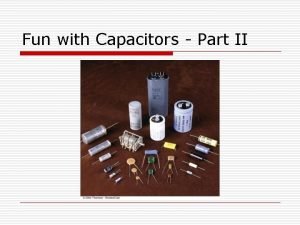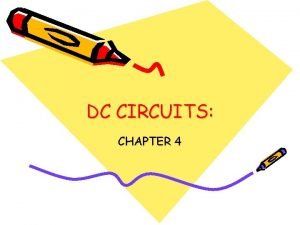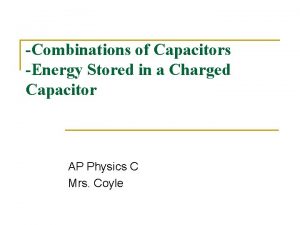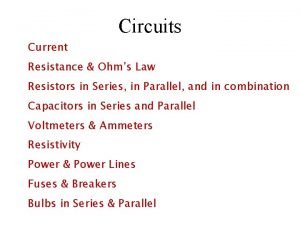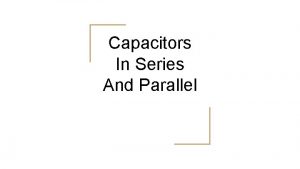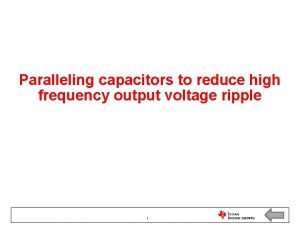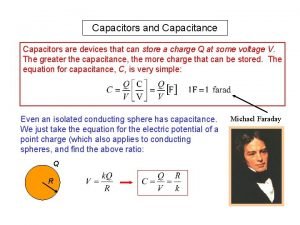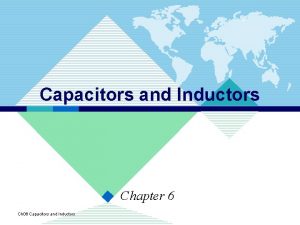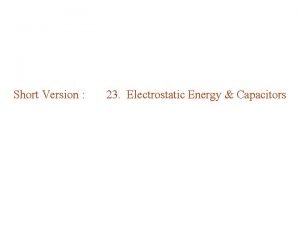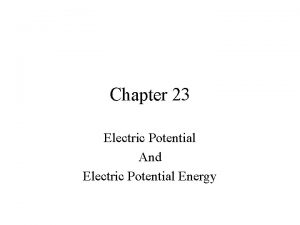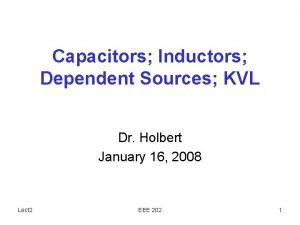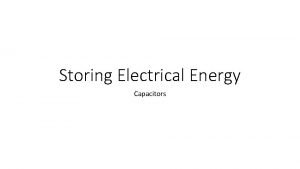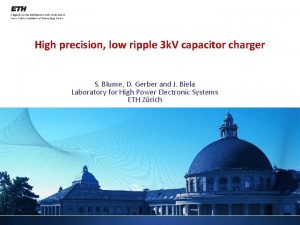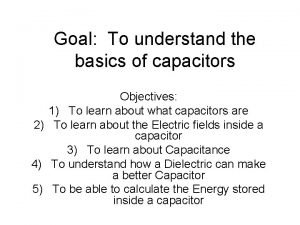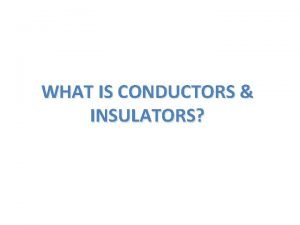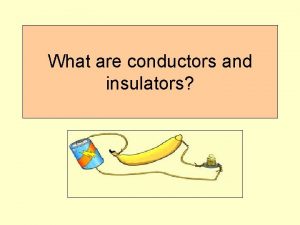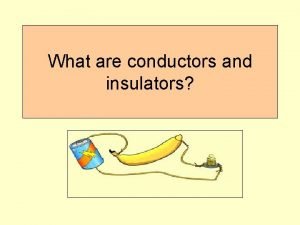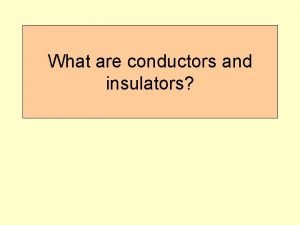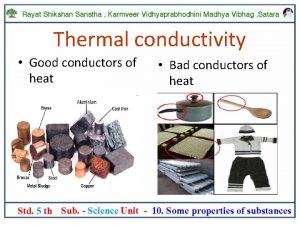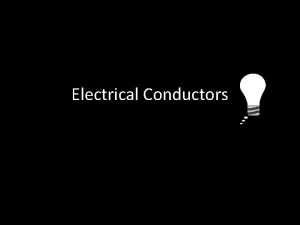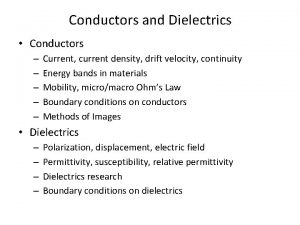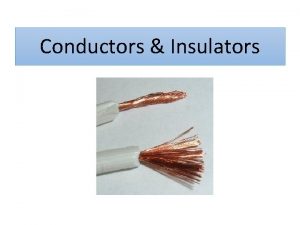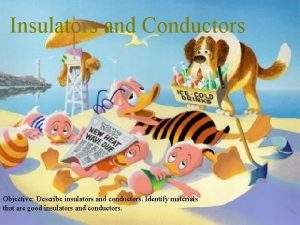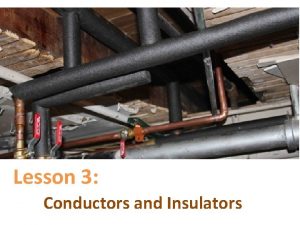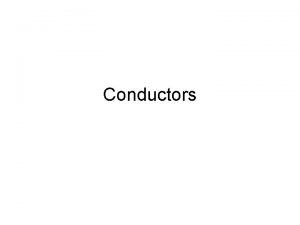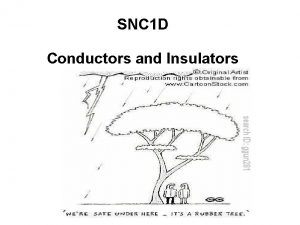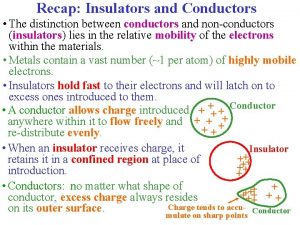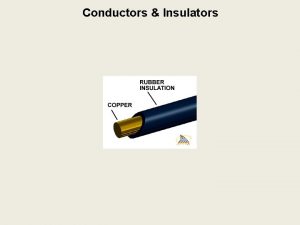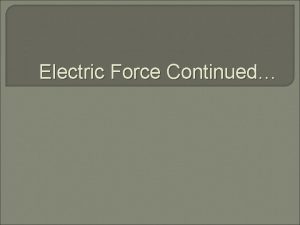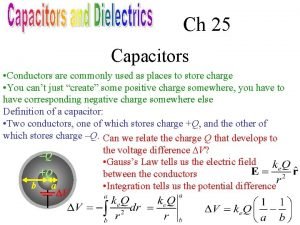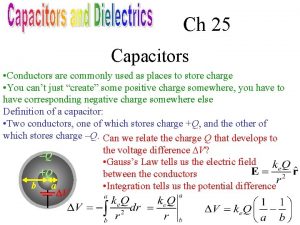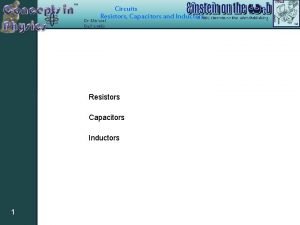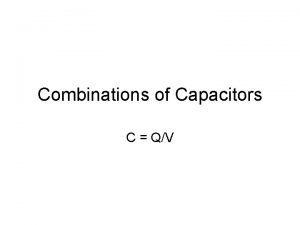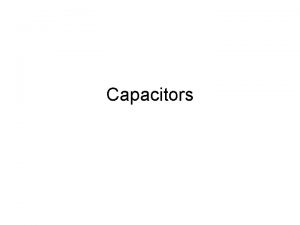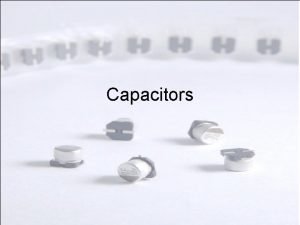CONDUCTORS CAPACITORS Class Activities Conductors Capacitors slide 1

























- Slides: 25

CONDUCTORS + CAPACITORS

Class Activities: Conductors + Capacitors (slide 1)

Class Activities: Conductors + Capacitors (slide 2)

Class Activities: Conductors + Capacitors (slide 3)


2. 30 A point charge +q sits outside a solid neutral conducting copper sphere of radius A. The charge q is a distance r > A from the center, on the right side. What is the E-field at the center of the sphere? (Assume equilibrium situation). r A A) |E| = kq/r 2, to left B) kq/r 2 > |E| > 0, to left +q C) |E| > 0, to right D) E = 0 E)None of these

2. 30 In the previous question, suppose the copper sphere is charged, total charge +Q. (We are still in static equilibrium. ) What is now the magnitude of the E-field at the center of the sphere? r A A) |E| = kq/r 2 +q B) |E| = k. Q/A 2 C) |E| = k(q-Q)/r 2 D) |E| = 0 E) None of these! / it’s hard to compute

2. 34 We have a large copper plate with uniform surface charge density Imagine the Gaussian surface drawn below. Calculate the E-field a small distance s above the conductor surface. s A) |E| = / 0 B) |E| = /2 0 C) |E| = /4 0 D) |E| = (1/4 p 0)( /s 2) E) |E| =0

The Periodic Table metal semiconductor or intermediate insulator

A neutral copper sphere has a spherical hollow in the center. A charge +q is placed in the center of the hollow. What is the total charge on the outside surface of the copper sphere? (Assume Electrostatic equilibrium. ) qouter = ? +q A) Zero B) -q C) +q D) 0 < qoutter < +q E) -q < qouter < 0 To think about: What about on the inside surface?

Click A as soon as you start page 2! Click B as soon as you START page 3! When done, answer this: A long coax has total charge +Q on the OUTER conductor. The INNER conductor is neutral. s=0 s=c +Q What is the sign of the potential difference, DV = V(c)-V(0), between the center of the inner conductor (s=0) and the outside of the outer conductor? C) Positive D) Negative (To think about: how and where E) Zero do charges distribute on surfaces? )

2. 27 A cubical non-conducting shell has a uniform positive charge density on its surface. (There are no other charges around) What is the field inside the box? A: E=0 everywhere inside B: E is non-zero everywhere inside C: E=0 only at the very center, but non-zero elsewhere inside. D: Not enough info given

E field inside cubical box (sketch) E-field inside a cubical box with a uniform surface charge. The E-field lines sneak out the corners!

A long coax has total charge +Q on the OUTER conductor. The INNER conductor is neutral. s=0 s=c +Q What is the sign of the potential difference, DV = V(c)-V(0), between the center of the inner conductor (s=0) and the outside of the outer conductor? C) Positive (To think about FIRST: how and where do charges distribute on all surfaces? ) D) Negative E) Zero

A point charge +q is near a neutral copper sphere with a hollow interior space. In equilibrium, the surface charge density on the interior of the hollow space is. . =? +q A) Zero everywhere B) Non-zero, but with zero net total charge on interior surface C) Non-zero with nonzero net total charge on interior surface.

2. 30 a A HOLLOW copper sphere has total charge +Q. A point charge +q sits outside at distance a. A charge, q’, is in the hole, at the center. (We are in static equilibrium. ) What is the magnitude of the E-field a distance r from q’, (but, still in the “hole” region) +q’ r +Q A) |E| = kq’/r 2 +q B) |E| = k(q’-Q)/r 2 C) |E| = 0 a D) |E| = kq/(a-r)2 E) None of these! / it’s hard to compute

2. 3 b A HOLLOW copper sphere has total charge +Q. A point charge +q sits outside. A charge, q’, is in the hole, SHIFTED right a bit. (We are in static equilibrium. ) What does the E field look like in the “hole” region? +q’ +Q A) Simple Coulomb +q field (straight away from q’, right up to the wall) B) Complicated/ it’s hard to compute

2. 30 c A HOLLOW copper sphere has total charge +Q. A point charge +q sits outside. A charge, +qc, is in the hole, SHIFTED right a bit. (Assume static equilibrium. ) What does the charge distribution look like on the inner surface of the hole? +q +qc +Q A) All - charges, uniformly spread around B) - charges close to qc, + charges opposite qc C) All - but more close to qc and fewer opposite D) All + but more opposite qc and fewer close E) Not enough information

CAPACITORS

2. 49 Given a pair of very large, flat, conducting capacitor plates with surface charge densities +/- , what is the E field in the region between the plates? +Q A) B) C) D) E) + + + + - - - 2 4 Something else - - - -Q

2. 49 m Given a pair of very large, flat, conducting capacitor plates with total charges +Q and –Q. Ignoring edges, what is the equilibrium distribution of +Q the charge? -Q A) Throughout each plate B) Uniformly on both side of each plate C) Uniformly on top of + Q plate and bottom of –Q plate D) Uniformly on bottom of +Q plate and top of –Q plate E) Something else

2. 50 You have two very large parallel plate capacitors, both with the same area and the same charge Q. Capacitor #1 has twice the gap of Capacitor #2. Which has more stored potential energy? #1 A) #1 has twice the stored energy B) #1 has more than twice C) They both have the same D) #2 has twice the stored energy E) #2 has more than twice. +Q -Q #2 +Q -Q

2. 51 You have two parallel plate capacitors, both with the same area and the same gap size. Capacitor #1 has twice the charge of #2. Which has more capacitance? More stored energy? A) C 1>C 2, PE 1>PE 2 B) C 1>C 2, PE 1=PE 2 C) C 1=C 2, PE 1=PE 2 D) C 1=C 2, PE 1>PE 2 E) Some other combination! #1 +2 Q -2 Q #2 +Q -Q

V A parallel plate capacitor is attached to a battery which maintains a constant voltage difference V between the capacitor plates. While the battery is attached, the plates are pulled apart. The electrostatic energy stored in the capacitor A) increases B) decreases C) stays constant.

3. 4 Two very strong (big C) ideal capacitors are well separated. What if they are connected by one thin conducting wire, is this electrostatic situation physically stable? -Q - + + +Q + + + A)Yes B)No C)? ? ? -Q- + + + +Q + + +
 How to heel toe dance
How to heel toe dance Operating activities vs investing activities
Operating activities vs investing activities Indoor sports outdoor sports
Indoor sports outdoor sports Support activities and primary activities
Support activities and primary activities Primary and secondary activities
Primary and secondary activities Fun with capacitors
Fun with capacitors Dc
Dc Energy stored in parallel plate capacitor
Energy stored in parallel plate capacitor Capacitor vs resistor
Capacitor vs resistor Parallel capacitor
Parallel capacitor Paralleling capacitors
Paralleling capacitors Capacitance
Capacitance 6-25
6-25 Electrostatic energy
Electrostatic energy Energy stored in capacitors
Energy stored in capacitors Kvl capacitor
Kvl capacitor Energy in the capacitor
Energy in the capacitor High precision capacitors
High precision capacitors The basics of capacitors
The basics of capacitors Binomials factoring
Binomials factoring Welcome to the class
Welcome to the class Conductor and insulator
Conductor and insulator What are conductor
What are conductor What are conductors
What are conductors What are conductors
What are conductors Uses of bad conductors of heat
Uses of bad conductors of heat





